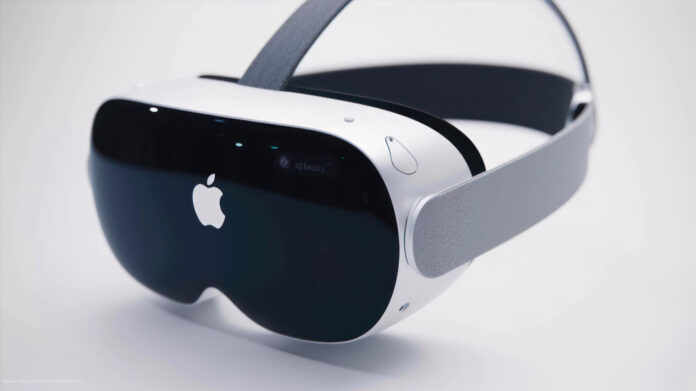Apple reportedly plans a slimline Vision Air and smart glasses by 2027, with full AR glasses by 2028
Apple could release a slimmer, lighter, and cheaper mixed-reality headset dubbed Vision Air in 2027, alongside its first pair of smart glasses, according to long-time supply chain analyst Ming-Chi Kuo.
In a sweeping new report outlining Apple’s spatial computing roadmap through 2028, Kuo claims the tech giant is preparing to enter the mainstream wearables market in force—first with a refreshed Vision Pro in 2025, then a major push in 2027 with Vision Air and Ray-Ban-style smart glasses, followed by true AR glasses in 2028.
The Vision Air headset, Kuo claims, will weigh over 40% less than the current Vision Pro, and will cost significantly less by shedding high-end components. Apple will reportedly replace the aluminum body with magnesium, swap glass for plastic, and use a mobile-grade A-series chip instead of the Mac-class M-series. According to Kuo, the A-chip will be the same one expected to power the iPhone 19 Pro.
Kuo’s timeline marks a shift from his earlier reports, where he warned the lower-cost headset might be delayed beyond 2027. He now predicts mass production in the second half of that year.
The lighter build comes at a cost. Kuo and Bloomberg’s Mark Gurman both suggest Vision Air may lack EyeSight, the Vision Pro’s lenticular eye-display system designed to enhance co-presence by simulating eye contact. Vision Air may also feature fewer sensors and simpler optics.
Gurman’s reporting supports much of Kuo’s analysis, though he suggests Apple might be targeting a 2026 release for the company’s smart glasses—a product designed to compete with Meta’s Ray-Ban glasses. These lightweight wearables are expected to include cameras, speakers, microphones, and support for live translation, navigation, and Apple’s new AI system, Visual Intelligence.
Kuo disagrees. He claims production on Apple’s glasses won’t begin until mid-2027, with 3–5 million units projected in their first year. Gurman recently said Apple was “ramping up” efforts to meet a late 2026 target, indicating the timeline remains fluid.
Embed from Getty ImagesMeanwhile, Apple has reportedly paused a tethered AR display glasses project, once designed to run via iPhone or Mac. Kuo says the concept struggled with technical constraints and poor internal reviews, but isn’t fully cancelled. Instead, Apple is “repositioning and refining specifications.”
Beyond 2027, Apple’s ambitions move to full-blown augmented reality. Kuo predicts Apple’s true AR glasses will finally enter production in late 2028. These glasses would feature LCoS (liquid crystal on silicon) microdisplays with waveguide optics, similar to Magic Leap or Microsoft’s first HoloLens. Meta is also targeting 2027 for similar technology.
But there may be more. Kuo hints that Apple is developing a second, lower-visibility AR glasses model with an even later launch timeline. Bloomberg previously reported on a secretive Apple team developing microLED displays—tech that promises unparalleled clarity and efficiency but has yet to scale for consumer use.
As for the current Vision Pro, Apple will reportedly release a minor refresh in 2025, updating the M2 chip to an M5 processor, without other changes. Gurman claims Apple also wants to reduce the weight and price of the Pro model, but specifics remain unclear.
Kuo’s report paints a picture of Apple slowly transitioning from high-end niche devices to mass-market wearables by the end of the decade. Vision Air, smart glasses, and true AR devices will all be key steps in that evolution.
Still, Kuo’s track record is mixed, and these predictions may shift with development hurdles. His insights should be viewed not as fixed roadmaps, but as informed signals from within Apple’s hardware pipeline.
